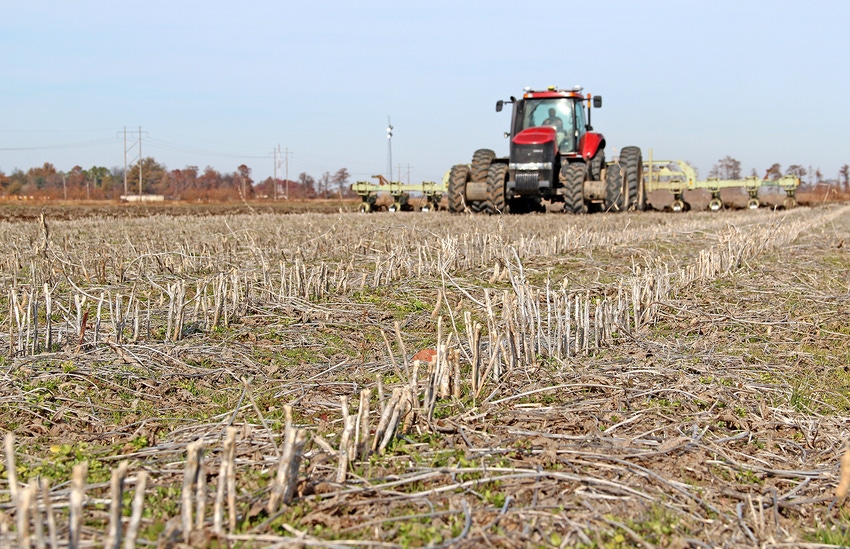
Domestic and global economic conditions tend to affect cotton markets more precipitously than for grains, cereals and produce.
Consumers can put off buying new shirts, bedding, or towels, but they can’t quit eating.
Still, cotton plays a critical role in rural economies across the Cotton Belt and farmers continue to refine production and marketing strategies to keep the crop viable.
Cotton farmers are resilient, said Michael Deliberto, assistant professor, Farm Management and Agricultural Policy, Louisiana State University Agricultural Center, Baton Rouge.
“When the cotton market declines, farmers reassess,” Deliberto said. “Producers may consider reducing variable costs such as fertilizer rates and pest control, which could affect productivity.”
Evaluating farm equipment replacement might be a better option.
“That’s the biggest investment cotton producers make, when to replace tractors, planters, and especially harvest equipment.”
Is it better to replace aging equipment now or delay for another year? Is downtime causing costly planting or harvest delays and threatening yield and quality? Is purchase a better option than leasing or custom harvest?
CHECK BUDGETS
Deliberto recommends looking at enterprise budgets, evaluating depreciation, interest, and acreage. “Consider increased repair cost and potential economic losses from increased down time with older equipment. Breakdowns and delays, especially at planting and harvest, may reduce yield and harvest efficiency. Cotton quality may take a hit from delayed harvest and weather damage when growers are forced to harvest under less-than-ideal circumstances.”
Sometimes replacement is necessary. When the on-board module builder harvesters hit the market several years ago, many farmers looked at the capital investment, above $700,000, he said, and wondered how they could fit that into a budget.
RUN THE NUMBERS
It’s important to evaluate several factors, he explained. The round-bale harvesters eliminate boll buggies, module builders, tractors and operators for those units.
“Recapturing the investment cost of a round bale harvester is a function of purchase price, interest rate, fuel consumption, labor rate, and the acres harvested per hour (performance rate),” he said. “A cotton grower considering investing in such a machine should evaluate the breakeven acres needed to warrant the investment against expense he would incur with a custom harvest group.”
Producers could cover more acres per hour, improve performance, and possibly perform custom harvest for other growers to offset costs. Fuel consumption and field speed also affect investment and return.
He said other considerations include field capacity — how fast a machine runs and how many acres it covers in a day. “Put pen to paper to evaluate how much fuel the machine is consuming,” he said. Newer equipment likely will be less costly to operate.
He said several factors dictate machinery need. “Is it better to buy more tractors or one larger one? Consider acreage and labor components. Do you have the manpower for more machines?
“Producers should constantly evaluate the scope of field operations for timeliness since newer, larger planters may allow them to plant more acres faster and within optimal planting windows for maximum yields. Newer machines initially carry a higher fixed cost but also a reduction in variable costs through efficiency gains.”
CROP MIX
Deliberto said crop mixes make a difference, too.
“Some tillage equipment can be shared between crops. But cotton is unique; it’s a whole other harvest machine, not like a grain combine that can go from corn, to soybeans to small grain with only header changes.”
Planter replacement is another concern.
“Producers may capture revenue with timely planter replacement. Newer planters can plant faster, more accurately and operate during the optimum planting window. Sometimes, with older equipment, producers might sacrifice yield to weather planting delays.”
OWN OR LEASE?
Leasing, rather than owning, might fit some producers and could reduce repair costs because machines are replaced more often.
“But they should look closely at contracts to determine warranties. Contracts will be unique to individuals, so the relationship with the equipment dealer is important. Are warranties based on time or hours on the machine? Also, consider tax issues with ownership. Is an accelerated depreciation schedule a good option?”
Sharing equipment with a neighbor could spread equipment costs over more acres. But Deliberto said in partnerships each party must know how the equipment will be shared.
“Is it 50/50 or dependent on the number of acres each party manages? It’s important to determine how to assess repair costs, depreciation, and time.”
FARMER EXPERIENCE
Ron Holthouse and Travis Senter II have made it work. They have improved cotton production efficiency through a partnership that allows them to share equipment, buy in bulk and limit costly downtime.
They own acreage together and farm contiguous properties of their own near Osceola, Ark. The partnership allows them to capitalize on equipment, labor, and time.
“We improve efficiency by working together,” Holthouse said, especially at planting and harvest.
Timing and communication on day-to-day progress are crucial issues. “The biggest thing with an operation of this size and two different owners is making sure each partner is fairly compensated and each is given adequate time,” Holthouse said.
Senter uses computer technology to track daily activities and to schedule labor and equipment. “You've got to have accurate records to know where every piece of equipment is at all times. Without that, we would not know who's got what,” Senter said.
Daily summaries keep the schedule balanced.
“During harvest, I throw out numbers to Travis — like, ‘Travis, today you're 38% picked and I'm 41%.’ Every morning during harvest we get a group text showing how much each operation has left to harvest,” Holthouse said.
They sometimes start harvesting or planting on their own and as the operations wind down work together to finish. If one gets in a jam, they divert equipment and labor to help catch up.
“If one of us gets behind, it’s not uncommon to get a couple of tractors in the field to help. It works out both ways,” Holthouse said.
BULK BUYING
Through the partnership, they buy in bulk and negotiate prices for equipment. “We buy a lot of seed, chemical, and fertilizer as one unit because we get a better price and tighten our margins,” Senter said.
They also buy equipment under one big umbrella. They trade pickers every year to avoid costly repair and downtime.
“That makes a difference with something like an almost $1 million picker,” Holthouse said. “The cost of repairs is astronomical.”
They follow the same principle with sprayers and tractors but typically keep precision planters for two seasons.
“I don't have to reset everything on the planter the second year,” Senter said. “That saves time. At planting time, I can go straight to the field. Two things need to be ready to go on time — planting and harvest capacity.”
Senter and Holthouse say the partnership — farming together and sharing resources on their other operations — allows them to manage costs and improve resource and time management.
OTHER EXPENSES
In addition to the big-ticket items, Deliberto said cotton producers need to pay attention to the routine expenses to improve production efficiency.
Enterprise budgets help evaluate seeding rates, fertility, and pest management.
“Consider pre-booking seed, fertilizer and fuel to lock in lower unit costs. Do you have on-farm storage for fuel? If not, consider pre-booking for later delivery.”
He recommends evaluating operator efficiency and fuel use. How much is 20 cents per gallon saved worth across an entire field?”
He said the basics remain important to maintain or improve efficiency — soil testing, for instance. A Cadillac treatment for weed or pest management might look good, but is the cost justified? What is the yield response? Scout for pest problems.
The bottom line, Deliberto said, depends on information, taking time to evaluate the costs and opportunities of each input in a cotton operation so that profit potential doesn’t disappear with volatile markets.
About the Author(s)
You May Also Like






